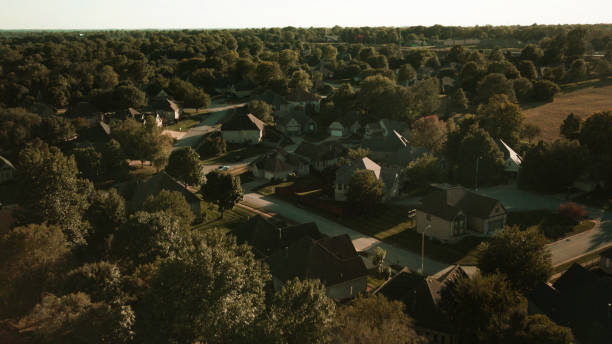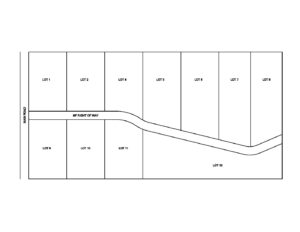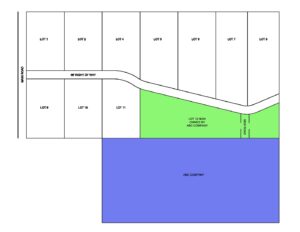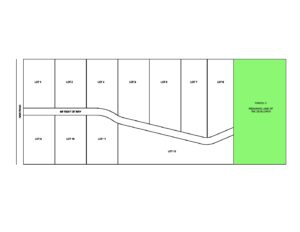In our previous blog, we discussed some examples of living within a land development, commonly known as a subdivision, and how rights within the development work, along with an example of a road within a typical subdivision that might be maintained. We will continue with some further examples using the same typical subdivision.
The State of Maine legislature has changed the laws governing what happens to the ownership of private roads over the years. Maine Revised Statues Title 33 Subsection 469-A, a law adopted in 2011, attempted yet again to clarify what happens to unaccepted subdivision roads.
You have to know when the road was created and look at the laws in effect at the time or laws subsequently passed by the legislature that might have changed the disposition of a private road. Your attorney must research the subdivision and the law to advise you on private road ownership.
Similarly, a 12-lot subdivision with a long dead-end road was created 20 years ago. The road on the subdivision plan provided for a 66-foot wide right of way for the 12 lot owners. The road remained private, and the original development company long went out of business.
One of the parcels (LOT 12) abutted a large undeveloped parcel of land owned by the ABC Company. The ABC Company purchased the subdivision lot adjoining their large undeveloped parcel. It proceeded to build a road to their large parcel over the subdivision lot to access the large parcel for whatever purpose.
This situation creates what is known as overburdening an easement. The original 12 lot owners were granted rights over the 66-foot wide easement for their exclusive enjoyment and benefit. That enjoyment generally cannot be extended or expanded. The 11 other lot owners rightfully presumed that the road use would be limited to serving 12 parcels of land and no more. There would be a general expectation that the vehicle traffic from 12 subdivision lots would be relatively infrequent other than short-duration disturbances when let’s say a new home is built and a burst of construction activity goes on while a home is built.
Any of the 11 other lot owners could individually or collectively bring a lawsuit to prohibit the ABC Company from using the subdivision road to benefit their sizeable undeveloped lot and, in all likelihood, win their case. The Maine courts have consistently decided when an easement is overburdened.
This would be different if, let’s say, the original subdivision developer created the original 12 lots but still retained ownership of a substantial amount of remaining land (PARCEL C) and reserved easements to benefit the remaining land. That original developer would have the right to extend the road and create additional development in later years without the original 12 lot owners’ permission or consent. In all likelihood, the original developer retained ownership of the road, and the original 12 lots were granted non-exclusive rights over the road.
As you can see, living within a development, or a subdivision, can bring some serious issues to the forefront. If purchasing a parcel within a subdivision or any land accessed by a private (many times a dirt road) road, you would be wise to consult with your attorney and come to a complete understanding of your rights and the rights of others to use the road and whom is responsible for maintaining the road.
Our next blog will discuss other accesses and the difference between exclusive and non-exclusive easements.




